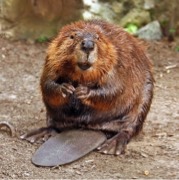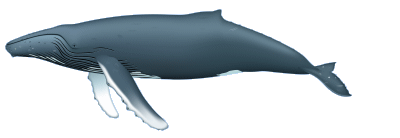Sign up for FlowVella
Sign up with FacebookAlready have an account? Sign in now
By registering you are agreeing to our
Terms of Service
Loading Flow

snowshoe hare
beaver
Moose
harbor seal
finback
Puffins
minke
humpback
Common loon
bald eagle
white-winged scoters

The park boasts close to 50 species of land and marine mammals, reptiles and amphibians.
White-tailed deer are plentiful in Acadia. Tall and graceful, with a tan coat and a tail with a white underside, the deer feed on grasses and tree buds.
One of the white-tailed deer's natural predators is the eastern coyote, a buff-colored canine that resembles the wolf but has a smaller build, narrower muzzle and larger ears. Since the 1960s, the coyote's numbers have been increasing in Maine, leading some to call for this predator's eradication—a position much criticized by environmentalists. While the coyote is not common on Mount Desert Island, many residents report hearing its distinctive, high-pitched "singing" at night. You may see the red fox hunting hare and small rodents in open fields and salt marshes, or darting across the park's roads and carriage roads by night. During the fall and winter, its red-brown coat becomes thick and richly colored.
Heavily trapped for its fur during the last century, the beaver had all but disappeared from Mount Desert Island. Local legend has it that Acadia owes its present healthy population to just two pairs of beavers released in 1920 by the park's first superintendent, George Dorr.

Some of the most commonly seen whales include the finback, which ranges from 30 to 70 feet in length and has a distinctive white stripe across the right side of its jaws; the humpback, which is 30 to 60 feet in length and is noted for its acrobatic behavior, knobby head and snout; and the smaller minke, which is usually less than 20 feet in length. Puffins aren't visitble from Mount Desert Island on Mt. Desert Island, but they do live on islands along Acadia's coast. Many of these creatures may be seen during popular whale watching cruises.

Black guillemots are distinct both in sight and sound—they have brilliant red feet, white wing patch and raucous squawks. These impressive birds nest on Long Porcupine Island and are visible along its steep ledges. Guillemots can dive as deep as 165 feet to catch their favorite treats—cod and mollusks.

Fauna